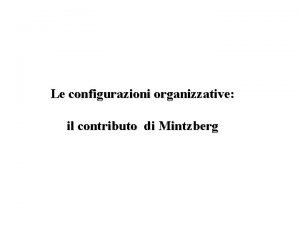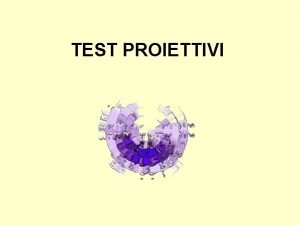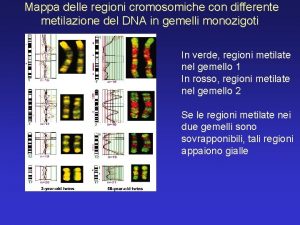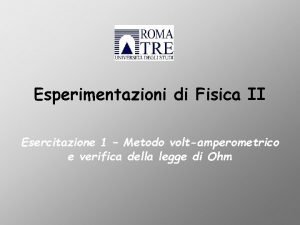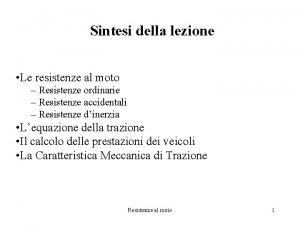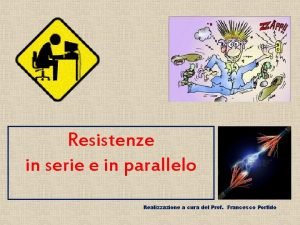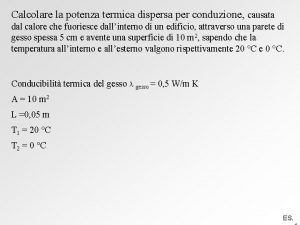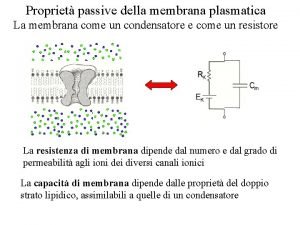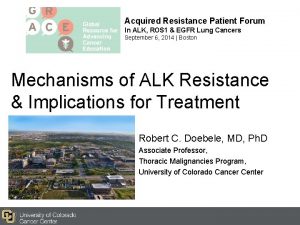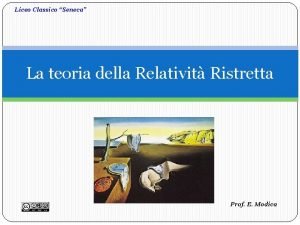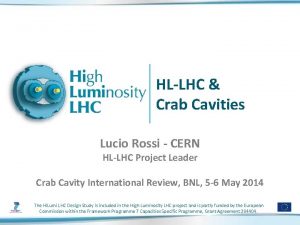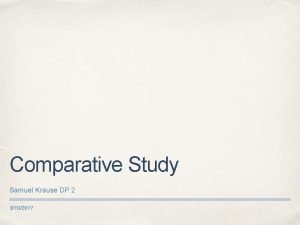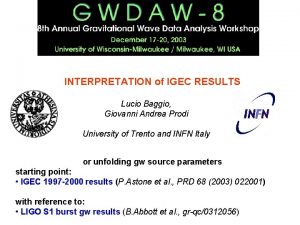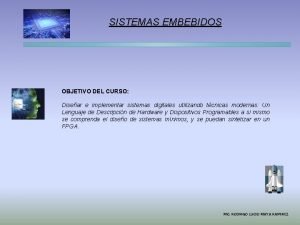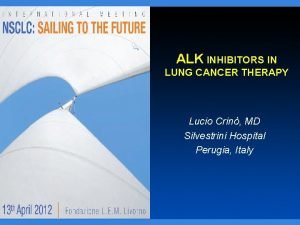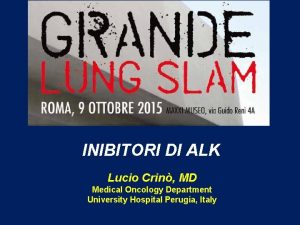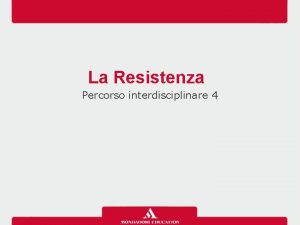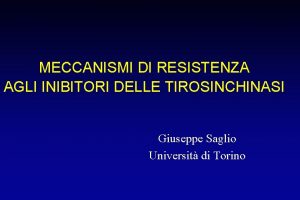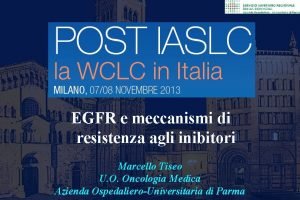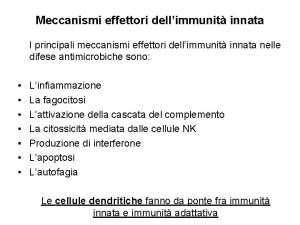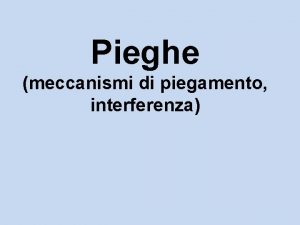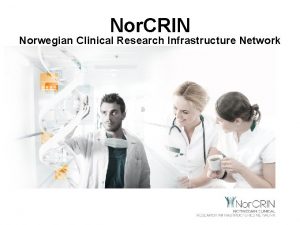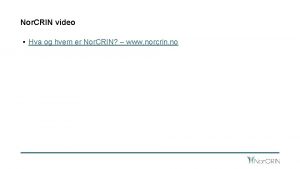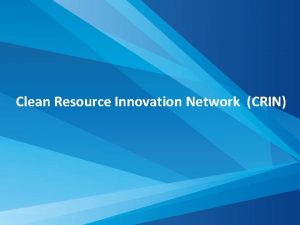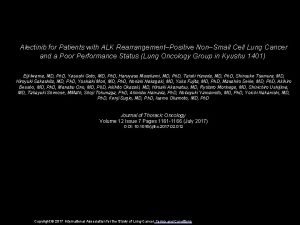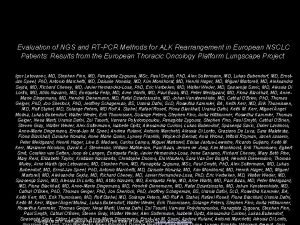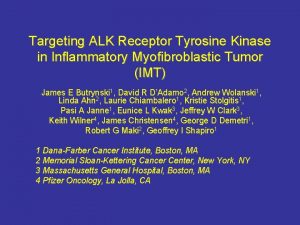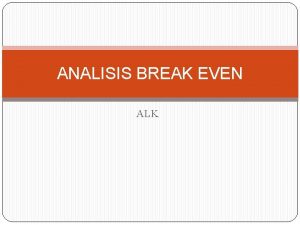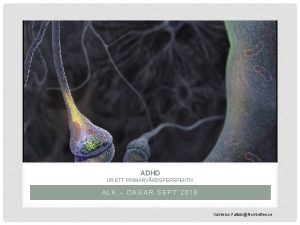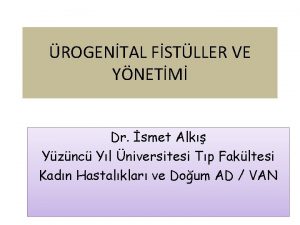ALK e meccanismi di resistenza Lucio Crin S




![[TITLE] Presented By Fabrice Barlesi, MD, Ph. D at 2013 ASCO Annual Meeting [TITLE] Presented By Fabrice Barlesi, MD, Ph. D at 2013 ASCO Annual Meeting](https://slidetodoc.com/presentation_image_h2/c56622bdf8ca15c11ab6d870be73b923/image-5.jpg)






























- Slides: 35

ALK e meccanismi di resistenza Lucio Crinò S. C. di Oncologia Medica Azienda Ospedaliera di Perugia

Outline • Current evidence with ALK-TKIs in naïve patients • ALK-TKIs in crizotinib-refractory disease • Challenging brain mets in ALK+ disease • Resistance to crizotinib: focus on ‘unknown’ mechanisms

Outline • Current evidence with ALK-TKIs in naïve patients • ALK-TKIs in crizotinib-refractory disease • Challenging brain mets in ALK+ disease • Resistance to crizotinib: focus on ‘unknown’ mechanisms

Crizotinib for ALK+ advanced NSCLC: RR appr. 60%, PFS 7. 7 -9. 7 mos Study No. of patients RR (%) PFS (mos. ) A 8081001 143 60. 8 9. 7 A 8081005 261 59. 8∞ 8. 1 A 8081007 173 65* 7. 7 French Temporary Authorization for use of Crizotinib 230 56. 5 Not reported ∞ 259 pts evaluable for response *Independent radiologic review Camidge, et al. Lancet Oncol 2012 Kim, et al. ASCO 2012 Shaw, et al. NEJM 2013 Perol, et al. ECCO 2013
![TITLE Presented By Fabrice Barlesi MD Ph D at 2013 ASCO Annual Meeting [TITLE] Presented By Fabrice Barlesi, MD, Ph. D at 2013 ASCO Annual Meeting](https://slidetodoc.com/presentation_image_h2/c56622bdf8ca15c11ab6d870be73b923/image-5.jpg)
[TITLE] Presented By Fabrice Barlesi, MD, Ph. D at 2013 ASCO Annual Meeting


2 nd generation ALK-inhibitors in clinical development Drug Inhibition of secondary L 1196 M ‘gatekeeper’ mutation Company Clinical stage AP-26113 Yes Ariad Pharmaceuticals Phase I/II LDK 378 Yes Novartis Phase II/III Alectinib Yes Chugai Pharmaceuticals Phase I/II TSR-011 Yes Tesaro Phase I NMS-E 628 Yes Nerviano Medical Phase I ASP-3026 Yes Astellas Phase I X-376 and -396 Yes Xcovery Phase I CEP-28122 Yes Cephalon Preclinical

RR with 2 nd generation ALK-inhibitors in Crizotinib-naïve patients Author Drug No. of pts RR (%) Camidge (ECCO 2013) AP 26113* 3 100 Shaw (ASCO 2013) LDK 378** 35 60 Seto (Lancet Oncol 2013) Alectinib*** 46 93. 5 *60 -300 mg/d **400 -750 mg/d ***300 mg x 2/d; Asiatic (Japanese) patients

Outline • Current evidence with ALK-TKIs in naïve patients • ALK-TKIs in crizotinib-refractory disease • Challenging brain mets in ALK+ disease • Resistance to crizotinib: focus on ‘unknown’ mechanisms

CHEMOTHERAPY TKI beyond PD or 2 nd generation TKI ± local therapy TKI beyond PD + brain RT

Chemotherapy +/- ongoing crizotinib for acquired resistance in ALK-positive NSCLC SWOG 1300 (in development) PI: Ross Camidge ALK rearrangement Progression on Crizotinib after response or SD > 3 mo No prior pemetrexed N=114 Co-primary endpoint: progression-free survival Respnse rate, pemetrexed alone R A N D O M I Z E Pemetrexed alone Pemetrexed + ongoing Crizotinib

Crizotinib beyond progression Ou, et al. IASLC 2013

AP 26113 in ALK+ NSCLCs (N=34) • • 65% (22/34) objective response rate (95% CI: 47 -80%) • 61% (19/31) post-crizotinib (incl. 1 criz intolerant) • 100% (3/3) in TKI-naïve (incl. 1 CR) Response duration 8+ to 40+ weeks • 14 confirmed, 4 awaiting confirmation, 4 not confirmed 13 All patients received prior crizotinib unless otherwise indicated; Doses ranged from 60 -240 mg/d (23 pts ≥ 180 mg/d); a. TKI-naïve; b. Received prior crizotinib and LDK 378; c. PD by RECIST 1. 1 due to 2 nd primary tumor of melanoma; d. Crizotinib-intolerant of 6 Sept 2013 Camidge, et. Data al. as IASLC


Alectinib in crizotinib-refractory patients Overall RR 54. 5% across all cohorts for all patients Waterfall plot % tumor shrinkage Duration on study Days on study (*: off study, data cut-off Sept. 12, 2013) ** * * ** ** * * Overall RR 59. 5% for cohorts of 460 mg dose or higher 24 of the 47 patients received the drug for 120 days or longer Gadgeel, et al. IASLC 2013

Outline • Current evidence with ALK-TKIs in naïve patients • ALK-TKIs in crizotinib-refractory disease • Challenging brain mets in ALK+ disease • Resistance to crizotinib: focus on ‘unknown’ mechanisms

The problem of CNS progression to Crizotinib in ALK+ patients • 13/28 (46%) patients at U. of Colorado with first progression in CNS - 2/13 had synchronous systemic progression Weickardt et al. JTO 2013 • Decreased CSF: plasma (0. 0026) ratio suggestive of pharmacological failure of Crizotinib Costa et al. JCO 2011

Crizotinib antitumour activity in patients with or without brain metastasis (BM) at baseline Previously untreated for BM (n=109) n Outcome Previously treated for BM (n=166) n Outcome No BM detected (n=613) n Outcome DCR at 12 weeks, % (95%CI) IC 109 56 (46− 66) 166 62 (54− 70) NA Systemic 109 63 (54− 72) 166 65 (57− 72) 109 7 (3− 14) 166 7 (4− 12) NA 22 18 (5− 40) 18 33 (13− 59) NA 109 53 (43− 63) 166 46 (39− 54) 613 71 (68− 75) ORR, % (95% CI) IC Target-lesion BM Systemic 613 55 (51− 59) Median time to tumor response (range), a weeks IC Systemic 8 6. 0 (4. 9− 12. 4) 12 6. 4 (5. 9− 17. 7) NA 58 6. 1 (2. 0− 31. 4) 77 6. 1 (3. 1− 35. 3) 8 26. 4 (6. 1− 59. 3) 12 NR (6. 0− 59. 9) 58 47. 9 (5. 3− 55. 0) 77 55. 6 (4. 4− 95. 3) 336 49. 0 (4. 1− 96. 1) 109 8. 3 (6. 7− 14. 0) 166 13. 5 (6. 2− 16. 5) 613 9. 9 (8. 8− 12. 2) 336 6. 1 (3. 0− 49. 1) Median duration of response b (range), a weeks IC Systemic Median systemic PFS, b (95% CI), c mo NR, not reached a. In patients with confirmed objective response; b. Kaplan−Meier method; c. Brookmeyer−Crowley method NA Costa, et al. IASLC 2013

Example of a complete response of a brain lesion in response to crizotinib treatment Before initiation of crizotinib 6 weeks after crizotinib 250 mg BID This patient presented with a brain lesion previously treated with chemotherapy and palliative IC radiation, which was classified as a target lesion. A CR in this lesion was observed after 6 weeks of treatment and had persisted for 54 weeks by data cutoff (courtesy of J-Y Han, National Cancer Center, Goyang, South Korea)

Systemic progression-free survival (PFS) by presence or absence of brain metastases (BM) at baseline (BL) The presence of BM at BL does not significantly affect systemic PFS to crizotinib Costa, et al. IASLC 2013

CNS activity of alectinib • ORR of the 21 patients as determined by central image review CR PR SD PD Total N=21 6 5 8 2 % 29% 24% 38% 10% • 9/21 patients with baseline CNS metastasis had measurable CNS lesions and received no prior radiation within 4 weeks from first dose of alectinib – No CR. 5/9 achieved CNS PR (≥ 30% reduction in sum of largest dimension). 2/9 had CNS stable disease and 2/9 had CNS progression. 0, 60 PR 0, 40 0, 20 0, 00 Brain RT > 4 wks 91+ 203+ No brain RT 42 -0, 20 -0, 40 224+ 287+ 224+ -0, 60 98+ 196+ 294+ -0, 80 Progressing CNS mets Days on study Ou, et al. IASLC 2013

Outline • Current evidence with ALK-TKIs in naïve patients • ALK-TKIs in crizotinib-refractory disease • Challenging brain mets in ALK+ disease • Resistance to crizotinib: focus on ‘unknown’ mechanisms

Unraveling the mechanisms of resistance to EGFR-TKIs and Crizotinib Amp lified Unknown ALK amp ALK+ No ALK amp or mut ALK mut M 96 1 L 1 G 1269 A S 1206 Y G 1202 R 115 L 11 1 Tins C 1 52 R 15 6 Y Bypass tracks EGFR MT KRAS MT Katayama, et al. Sci Trans Med. 2012 Doebele, et al. Clin Cancer Res. 2012

IGF-1 R and IRS-1 are up-regulated in ALK TKI resistant cells p. ALK Y 1604 ALK p. IGF-1 R Y 1131 IGF-1 R p. AKT S 473 AKT p. S 6 p. ERK IRS-1 p. Y 941 References: Lovly, C et al 2011 Cancer Research and Lovly, C et al submitted IRS-1 00 50 M SO TKI resistant D 00 50 ALK TKI [n. M] M SO TKI sensitive D Generation of isogenic pairs of ALK TKI sensitive and ALK TKI resistant cells

p. IGF-1 Rand and. IRS-1 are areup-regulatedininpatientbiopsysamplesatat thetimeof ofacquiredresistanceto tocrizotinib Reference: Lovly, C et al submitted

IGF-1 R inhibitors sensitize H 3122 ALK TKI resistant cells to the anti-proliferative effects of ALK inhibitors Key: - X-376: ALK TKI - MAb 391: IGF-1 R MAb - Soft agar assay in H 3122 X-376 resistant cells Similar results seen in H 3122 crizotinib resistant cells Analogous results seen with IGF-1 R TKIs in addition to IGF-1 R MAbs Reference: Lovly, C et al submitted

Rationale for double ALK/HSP 90 inhibition in ALK+ advanced NSCLC From Crystal and Shaw, Clin Cancer Res 2012

Hsp 90 inhibitor AUY 922: activity in ALK+ patients (n=19/22) Felip, et al. ESMO 2012

The Hsp 90 i AT 13387 overcomes acquired resistance to crizotinib H 2228 R tumor xenografts treated with AT 13387 Tumor #6 transplanted • AT 13387 treatment inhibits the growth of an ALK-dependent tumor xenograft with acquired resistance to crizotinib Wallis, IASLC 2013

Rationale for the upfront use of combination regimens Therapy Resistance Selection for resistance Selection for genetic instability ALK: (e. g. ALK-TKI + Hsp 90 inhibitor; ALK-TKI + IGFR-1 R inhibitors )

Preclinical evidence for UPFRONT dual ALK/Hsp 90 inhibition: ALK-TKI + Ganetespib Sang et al. Cancer Discov 2013

Preclinical evidence for UPFRONT dual ALK/Hsp 90 inhibition: ALK-TKI + AT 13387 • • Combination of AT 13387 and crizotinib shows improved inhibition of tumor growth over monotherapies Combining crizotinib upfront with AT 13387 delays the emergence of resistance in vivo Wallis, IASLC 2013

Clinical attempt to better Crizotinib: trials of ALK/HSP 90 inhibition Regimen Phase Clinical. Trials. gov Identifier Crizotinib + AT 13387 I/II NCT 01712217 Crizotinib + Ganetespib I/II NCT 01579994 LDK 378 + AUY 922 Ib NCT 01772797

ALK-inhibition in ALK+ NSCLC • Platform networks required tools for optimization of NSCLC treatment • 2 nd generation ALK-TKIs may break the boundary of 60% response rate observed with Crizotinib • Appr. 60% of RR with 2 nd generation ALK-TKIs in Crizotinibrefractory patients • 2 nd generation ALK-TKIs may prevent CNS pharmacological failure • Hsp 90 activity and IGF-1 R upregulation may be partly responsible for the non-ALK dominant mechanisms of resistance to crizotinib • Robust preclinical evidence of anticancer efficacy with ALKTKIs + HSP 90 or IGF-1 R inhibitors in ALK+ advanced NSCLC

Thanks for your attention lucio. crino@ospedale. perugia. it
 Valvola mucosa di von gubaroff
Valvola mucosa di von gubaroff Meccanismi locali di ribaltamento
Meccanismi locali di ribaltamento Mintzberg organizzazione aziendale
Mintzberg organizzazione aziendale Test appercezione tematica
Test appercezione tematica Fabbisogno energetico
Fabbisogno energetico Meccanismi epigenetici
Meccanismi epigenetici Resistenza a compressione legno
Resistenza a compressione legno Misura di resistenza con metodo volt amperometrico
Misura di resistenza con metodo volt amperometrico La resistenza marietti scuola
La resistenza marietti scuola Resistenza al moto
Resistenza al moto Meccanica dei fluidi
Meccanica dei fluidi Resistenza pleiotropica
Resistenza pleiotropica Resistenza elettrica corpo umano
Resistenza elettrica corpo umano Resistenza equivalente in parallelo
Resistenza equivalente in parallelo Potenza calore
Potenza calore Costante di spazio lambda
Costante di spazio lambda In movimento marietti scuola
In movimento marietti scuola Antibiotico resistenza
Antibiotico resistenza Besar sudut dalam lingkaran
Besar sudut dalam lingkaran Biblioteka alk
Biblioteka alk Biblioteka alk
Biblioteka alk Alk biblioteka katalog
Alk biblioteka katalog Alectinib forum
Alectinib forum Drain de florence
Drain de florence Quando fra l'altre donne ad ora ad ora
Quando fra l'altre donne ad ora ad ora Liceo classico lucio anneo seneca
Liceo classico lucio anneo seneca Lucio tarquinio
Lucio tarquinio Lucio rossi
Lucio rossi Lucio andreani
Lucio andreani Tammam azzam
Tammam azzam Giovanni allegro
Giovanni allegro Funciones de los elementos
Funciones de los elementos Lucio predonzani
Lucio predonzani A me piace la nutella
A me piace la nutella Lucio accio
Lucio accio Robert lucio
Robert lucio


